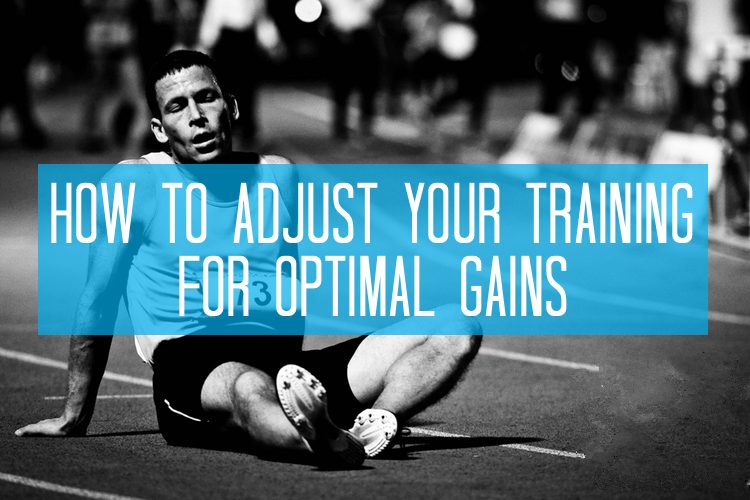One of the most significant challenges individuals face in pursuing fitness goals is finding the perfect balance between their training regimen and the demands of everyday life. Whether it’s juggling a full-time job, family responsibilities, or social commitments, real people with real lives often struggle to maintain consistency and adherence to their workout routines. However, the key to achieving optimal gains lies not in sacrificing one aspect of life for another but in learning to adjust and adapt your training program to integrate with your unique circumstances seamlessly.
Understanding Your Unique Circumstances
Assessing Your Life Demands
The first step in adjusting your training program for optimal gains is to assess the demands of your life honestly. Take a moment to evaluate your work schedule, family obligations, social commitments, and any other responsibilities that require your time and energy. By gaining a clear understanding of your daily, weekly, and monthly rhythms, you can better identify potential obstacles and plan your training sessions accordingly.
Identifying Your Priorities
Once you’ve mapped out your life demands, it’s crucial to identify your priorities. Are you primarily focused on building muscle mass, improving cardiovascular endurance, or enhancing overall health and well-being? Clearly defining your goals will help you create a training program that aligns with your unique needs and priorities, ensuring that your efforts are focused and productive.
Determining Your Training Preferences
Everyone has unique preferences when it comes to workout styles, environments, and schedules. Some individuals thrive in the high-energy atmosphere of a gym, while others prefer the solitude of home workouts. Some prefer early morning sessions, while others find their groove in the evening hours. Identifying your training preferences will not only make your workouts more enjoyable but will also increase the likelihood of consistent adherence to your program.
Crafting a Flexible Training Program
Incorporating High-Intensity Interval Training (HIIT)
High-Intensity Interval Training (HIIT) is a time-efficient and effective training method that combines short bursts of intense exercise with periods of active recovery. By incorporating HIIT sessions into your routine, you can maximize calorie burn, improve cardiovascular fitness, and boost metabolism, all within a condensed timeframe. This makes HIIT an excellent choice for individuals with busy schedules who struggle to find extended periods for traditional workouts.
Circuit Training
Circuit training is another versatile approach that can be tailored to fit your unique circumstances. This method involves moving from one exercise to the next, targeting different muscle groups in a continuous circuit. Circuit training not only provides a full-body workout but also allows you to adjust the intensity, duration, and exercise selection to suit your available time and equipment.
Exploring Home Workout Options
For those with hectic schedules or limited access to gym facilities, home workouts can be a game-changer. With the rise of online fitness platforms, mobile apps, and streaming services, you can access a vast array of workout routines, from yoga and Pilates to strength training and cardio sessions, all from the comfort of your living room. This flexibility allows you to squeeze in workouts whenever your schedule permits without the need to commute to a gym.
Optimizing Your Training Environment
Creating a Dedicated Workout Space
Establishing a dedicated workout space, even if it’s a small corner of your living room or bedroom, can significantly enhance your training experience and motivation. This designated area should be free from distractions and clutter, allowing you to focus solely on your workout. Consider investing in essential equipment, such as resistance bands, dumbbells, or a yoga mat, to maximize the efficiency of your home workouts.
Leveraging Technology for Guidance and Motivation
In today’s digital age, technology can be an invaluable ally in your fitness journey. Fitness apps, wearable devices, and online communities can provide personalized workout programs, track your progress, and offer motivational support. Additionally, virtual fitness classes and instructional videos can provide expert guidance and ensure proper form and technique, even when you’re unable to attend in-person sessions.
Incorporating Active Recovery and Mindfulness
While intense workouts are crucial for achieving your fitness goals, it’s equally important to prioritize active recovery and mindfulness practices. Activities like yoga, stretching, and meditation can help reduce stress, improve flexibility, and promote overall well-being. By incorporating these practices into your routine, you’ll not only enhance your physical recovery but also cultivate a healthier mindset, which can positively impact your adherence and commitment to your training program.
Fueling Your Body for Optimal Performance
Meal Prepping and Nutrition Planning
Proper nutrition is an essential component of any successful training program. To ensure that you’re fueling your body with the necessary nutrients for optimal performance and recovery, consider meal prepping and nutrition planning. By dedicating a few hours each week to preparing nutritious meals in advance, you’ll eliminate the temptation of unhealthy food choices and ensure that you have access to wholesome, energy-boosting meals, even on your busiest days.
Hydration and Supplementation
Staying hydrated is crucial for physical performance, recovery, and overall health. Make a conscious effort to drink adequate amounts of water throughout the day, and consider incorporating electrolyte-replenishing beverages or supplements, especially during intense workout sessions or periods of increased activity.
Balancing Indulgences and Moderation
While a disciplined approach to nutrition is essential, it’s equally important to find a balance between discipline and indulgence. Allowing yourself occasional treats or cheat meals can help prevent feelings of deprivation and ensure the long-term sustainability of your healthy eating habits. The key is to practice moderation and be mindful of your overall caloric intake and macronutrient balance.
Additional Data and Statistics
- According to the American College of Sports Medicine (ACSM), high-intensity interval training (HIIT) can burn up to 25-30% more calories than traditional steady-state cardio workouts of the same duration.
- A study published in the Journal of Strength and Conditioning Research found that circuit training can improve muscular strength, endurance, and body composition while also enhancing cardiovascular fitness.
- Research conducted by the National Institutes of Health (NIH) suggests that meal prepping and nutrition planning can lead to healthier food choices, improved portion control, and better adherence to dietary recommendations.
- According to the Centers for Disease Control and Prevention (CDC), proper hydration can enhance physical performance, cognitive function, and overall health, with recommendations for adults to consume approximately 15.5 cups.
People, Also Asked
How can I find the motivation to stick to my training program when life gets hectic?
- Surround yourself with a supportive network of friends, family, or online communities who share similar fitness goals. Additionally, set achievable short-term goals and celebrate small victories along the way to keep yourself motivated and engaged.
Is it better to focus on shorter, more intense workouts or longer, moderate sessions?
- The answer depends on your individual goals, preferences, and time constraints. Both approaches can be practical when implemented correctly. Consider alternating between high-intensity interval training (HIIT) and longer, moderate sessions to keep your body challenged and prevent plateaus.
How can I ensure proper form and technique when working out at home without a trainer?
- Leverage online resources, such as instructional videos or virtual fitness classes, to learn proper form and technique. Additionally, consider investing in a few sessions with a certified personal trainer who can provide guidance and ensure you’re exercising safely and effectively.
What should I do if I miss a scheduled workout due to unforeseen circumstances?
- Don’t beat yourself up over missed workouts. Instead, focus on getting back on track as soon as possible. If your schedule allows, try to make up the missed session later in the week or adjust your routine to accommodate the missed workout.
How can I balance my training program with social and family commitments?
- Communicate openly with your loved ones about your fitness goals and the importance of maintaining a healthy lifestyle. Seek their support and understanding, and try to involve them in your fitness journey whenever possible. Additionally, consider scheduling social activities that align with your fitness goals, such as group hikes or active outings.
Conclusion
Achieving optimal gains in the context of a busy, multifaceted life requires a delicate balance of discipline, flexibility, and a willingness to adapt. By assessing your unique circumstances, identifying your priorities, and crafting a training program that seamlessly integrates with your lifestyle, you can unlock your full potential and experience the transformative power of fitness. Whether through high-intensity interval training, circuit workouts, or leveraging the convenience of home workouts, the key is to find an approach that resonates with your preferences and aligns with your goals. Remember, proper fitness isn’t just about physical transformation; it’s about cultivating a holistic, sustainable lifestyle that nurtures your body, mind, and overall well-being. The journey, stay consistent, and celebrate the small victories along the way – because when you prioritize your health and fitness within the context of your real life, the gains you achieve will be truly remarkable.


